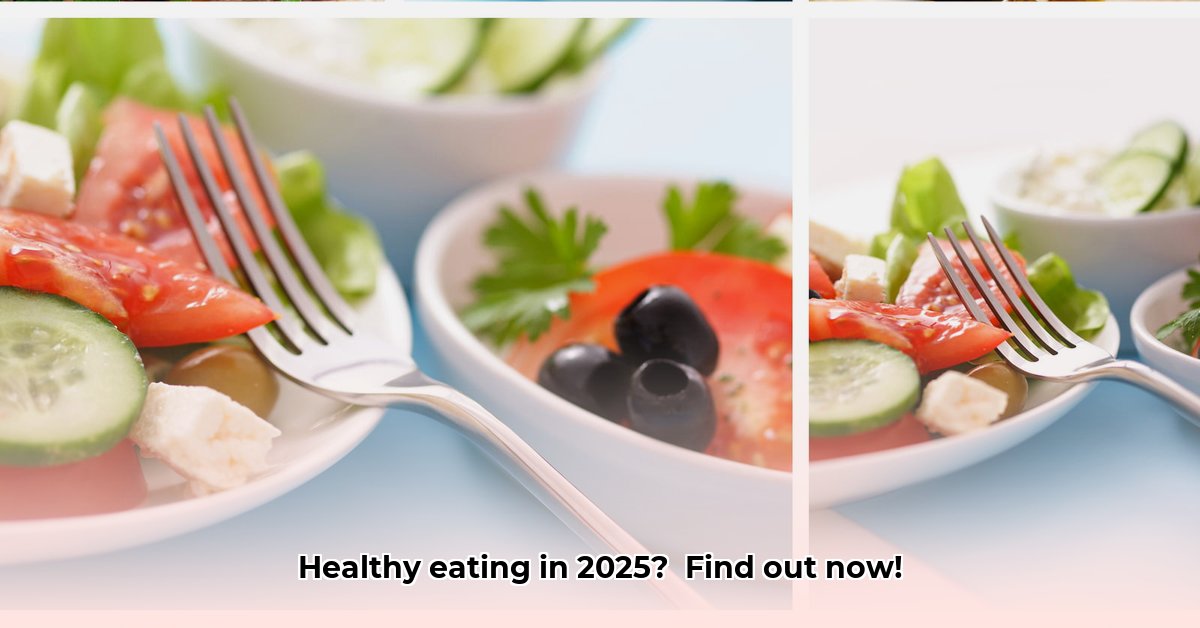Have you ever noticed the overwhelming abundance of healthy food photos online? We’re taking a closer look at stock photos – those images used everywhere from websites and advertisements to cookbooks and health brochures – to see what they reveal about our perceptions of healthy eating. We’ll pinpoint the top trends in these images, drawing insights on shifts in dietary preferences, distinguish accurate portrayals from misleading or harmful stereotypes, and offer actionable advice on creating more inclusive, authentic, and realistic visuals that truly represent the diversity of healthy eating. This is an in-depth exploration of healthy eating visuals, their current significance, and their future direction in shaping a more equitable and health-conscious world. For more diverse options, check out these healthy eating images.
Healthy Eating Photos: 2025 Trends & Insights
Uncover emerging patterns and future projections.
What’s the real story behind the picture-perfect healthy food images we constantly encounter? Let’s explore the world of healthy eating photographs and identify the trends shaping our visual experience of healthy lifestyles in 2025 and beyond. Are stock images truly reflecting healthy eating habits, or are they perpetuating unrealistic and exclusive ideals?
A Colorful Plate: What’s Hot in Healthy Eating Photography?
Lately, stock photo sites showcase a remarkable shift in healthy eating imagery. Bright, colorful fruits and vegetables are everywhere, mirroring the rising popularity of plant-based diets and flexitarian approaches. The increased representation of global cuisines signals a more inclusive understanding of healthy eating, moving beyond Western-centric views. Many visuals couple nutritious meals with active lifestyles, emphasizing the crucial connection between diet and exercise. But is this representation complete, and does it extend beyond superficial aesthetics?
Beyond the Ideal: Representing Real People, Real Diets
While colorful produce is inspiring, there’s significant room for improvement in representing the reality of healthy eating. Many healthy eating photos still lack diversity, portraying a specific and somewhat unrealistic ideal, leading many individuals to feel excluded or misrepresented. Do these images truly reflect healthy eating across diverse cultures, body types, ages, socioeconomic backgrounds, and abilities? To create a more genuine and relatable view of healthy eating, we require more variety – more images of people from diverse backgrounds, sizes, and circumstances enjoying healthy meals in ways that are authentic to their lives. We need images mirroring the multifaceted reality of a healthy world, not just a stylized and unattainable interpretation.
Sustainable Choices, Home-Cooked Goodness: New Trends Emerging
An exciting and increasingly prominent trend emphasizes sustainability and home cooking in healthy eating photos. More images feature locally sourced ingredients, farmers’ markets, community gardens, and meals prepared at home using traditional methods. Why? This reflects a growing awareness of food origins, environmental concerns, and a renewed appreciation for the art of cooking from scratch. It’s a refreshing contrast to the pervasive focus on processed foods and takeout, reminding us that healthy eating benefits both our personal well-being and the health of the planet. What key insights can we extract from these trends about the future of healthy eating and its visual representation?
What These Trends Mean for the Future: Actionable Insights
These evolving visuals do more than just look appealing; they reveal how we collectively think about health, wellness, and food systems. Here’s what these trends mean for various stakeholders, along with concrete steps they can take to promote more inclusive and accurate representations of healthy eating:
- Food Companies & Retailers: Must commit to utilizing more diverse and inclusive images and videos in all marketing and advertising materials, showcasing a wider range of cultures, body types, and abilities.
- Health Professionals: Should actively share evidence-based messages about balanced nutrition and challenge unrealistic body standards perpetuated by media, promoting body positivity and intuitive eating.
- Marketing & Advertising Agencies: Have a significant responsibility to create campaigns representing truly healthy eating for everyone, avoiding stereotypes and prioritizing authentic representation.
- Stock Photography Agencies: Need to actively diversify their content libraries, working with photographers and models from underrepresented communities to capture genuine and culturally relevant images of healthy eating.
- Consumers: Can actively support brands and media outlets that prioritize inclusivity and authenticity in their visual representations of healthy eating, demanding better from the industry as a whole.
These actionable insights are instrumental in adjusting future strategies for a healthier and more equitable global approach to food and wellness.
| Stakeholder | Short-Term Actions (Next Year) | Long-Term Actions (3-5 Years) |
|---|---|---|
| Food Companies & Retailers | Use more diverse and inclusive images in marketing, featuring various ethnicities, body types, ages, and abilities enjoying a wide range of healthy foods. | Develop products to meet various dietary needs and preferences, promote sustainable practices throughout their supply chains, and invest in community health initiatives that improve access to nutritious food for underserved populations. |
| Health Professionals | Share messages about healthy eating that challenge unrealistic body standards, promoting body positivity, intuitive eating, and a focus on overall well-being rather than weight. | Advocate for better media representation of health to combat negative body image and dietary issues, collaborate with community organizations to provide culturally relevant nutrition education, and conduct research on the impact of media on body image and eating behaviors. |
| Marketing & Advertising Agencies | Create campaigns that authentically represent healthy eating for everyone, showcasing diverse cultural traditions, body types, and socioeconomic backgrounds, working with diverse teams to ensure accurate and respectful representation. | Develop sophisticated strategies to ensure truly inclusive representation in all marketing materials, actively seek out and amplify the voices of underrepresented communities, and commit to ongoing education and training on diversity, equity, and inclusion. |
| Stock Photography Agencies | Actively diversify content libraries, working with photographers and models from underrepresented communities to capture genuine and culturally relevant images of healthy eating. | Invest in long-term partnerships with diverse communities to ensure ongoing representation and authenticity, develop guidelines for ethical and inclusive representation in food photography, and provide training and resources for photographers on how to capture diverse and authentic images of healthy eating. |
| Consumers | Support brands and media outlets that prioritize inclusivity and authenticity in their visual representations of healthy eating, demanding better from the industry as a whole, and share and promote diverse and positive images of healthy eating on social media. | Advocate for policies that promote food justice and access to healthy food for all, support community-based organizations working to improve nutrition and health outcomes, and educate themselves and others about the importance of diverse and inclusive representation in media and its impact on health. |
Looking Ahead: The Future of Healthy Eating Imagery
Authenticity, inclusivity, and sustainability will likely define the future of healthy eating photos. We’ll see more images reflecting diverse eating habits from various cultures, body types, ages, abilities, and economic backgrounds, moving beyond superficial representation to showcase the lived realities of diverse individuals. The focus on sustainability will persist, emphasizing thoughtful consumption, ethical food production, and the interconnectedness of human and planetary health. We’re moving towards more realistic and relatable depictions of healthy lifestyles, celebrating its amazing variety and complexity, not just a narrow, polished, and often unattainable ideal. Consider the potential for positive social impact as this visual landscape continues to evolve.
How to ensure inclusive representation in healthy eating stock photography
What concrete steps can be taken to foster diversity and authenticity?
Key Takeaways:
- Authenticity in imagery is paramount; it’s not just about diverse faces, but accurately reflecting diverse food cultures, preparation methods, and eating traditions.
- Requires a conscious and ongoing effort to showcase a wide range of body types, ethnicities, ages, abilities, socioeconomic statuses, and gender identities.
- Meaningful Collaboration with diverse communities is essential for capturing genuine representations of healthy eating habits that resonate with the lived experiences of the people being portrayed.
The Shifting Landscape of Healthy Eating Imagery
Have you ever felt disconnected or misrepresented while scrolling through stock photos of “healthy eating”? The same smiling, thin, often white individuals preparing identical salads (or variations thereof) present a significant problem, perpetuating narrow beauty standards and excluding diverse cultural food traditions and experiences. In 2025, the demand for authenticity and inclusivity in food photography is surging as we move beyond tired tropes and superficial representation. Today’s consumers and health advocates alike seek images reflecting global cultures, community diversity, and individual realities.
Beyond the Perfect Salad: Embracing Real Bodies and Real Food
Idealized and often unattainable images of healthy eating often exclude and alienate many people, particularly those from marginalized communities. This isn’t just about representation; it’s about fostering a sense of belonging, connection, and empowerment. Seeing oneself, or someone similar, genuinely enjoying food is profoundly empowering. It fosters a sense of belonging and deconstructs damaging and unrealistic beauty standards. Achieving this starts by questioning the very notion of the “perfect” body and the “perfect” meal. We need to see diverse body types, ethnicities, ages, abilities, and gender identities connecting with healthy food in ways that are authentic to their lives.
The Power of Cultural Representation
Food and culture are intrinsically linked, deeply intertwined with traditions, history, and social identity. The vibrant spices of Moroccan tagine, the hearty grains of Indian dal, the complex flavors of mole negro from Oaxaca, or the comforting warmth of Korean bibimbap exemplify that healthy eating isn’t a monoculture but a vibrant celebration of diversity. Our imagery must reflect this rich tapestry by showcasing the cultural significance, preparation methods, and social context of diverse healthy foods
- The Best Bento Box Price For Your Perfect Packed Lunch - December 15, 2025
- Bento Box Shopping Tips for Smart and Stylish Lunch Prep - December 14, 2025
- Bento Box Trays Streamline Restaurant Meal Presentation and Transport - December 13, 2025










